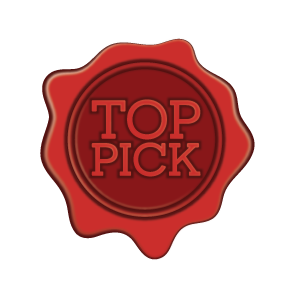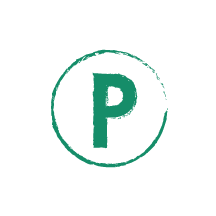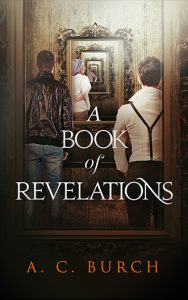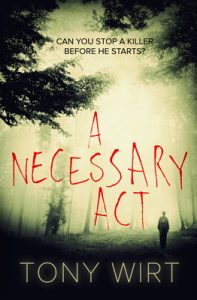The Rundown
The Recommendation
The Rating
The Links
The Reviewer
Katie Rose Guest Pryal
Visit Katie Rose Guest Pryal‘s website.A media kit (also called a press kit), is a marketing tool for authors use when reaching out to the media—including book bloggers—retailers, and more. The important thing to remember about a media kit is that its audience is not your readership, but rather members of the larger book marketing industry.
Because I publish my novels with a small press, putting together a media kit is a task that would fall to me.
Since I’ve never done this before, and I’m betting many of you have never done this before either, I thought I’d narrate this process in a column so we could all learn together from my mistakes.
In my other incarnation, I’m a writing professor (retired), who taught professional writing using a method I helped develop called “genre discovery.” Genre discovery might seem complicated, but it’s actually something professional writers do every day. Here’s how it works:
(1) When you are going to prepare a professional document that you have never written before, you must first study samples of the document to see what the document entails.
(2) If you study enough samples, you will start to notice patterns. Those patterns help you write the document
(3) When selecting samples to study, you should, as a general rule, select samples whose audience is most similar to yours.
Thus, to figure out how to write an effective media kit, the first thing I needed to do was to go to 4-5 authors’ websites who write books like mine and study their media kits. If the authors write books like mine, that means that their audiences are most likely similar to mine.
I tried various Google searches trying to find sample media kits. I quickly realized some things. First, there are a lot of resources out there with to-do lists for media kits. That’s great! I’ll provide links to some of the best ones at the end of this column.
Second, traditionally published authors usually have media kits hosted on their publisher’s websites, and also the ones I saw were kind of boring. Third, the place to search for media kits is in Google Images, not regular Google. I typed “author media kit” and “author press kit” into Google Images and a million media kit graphics came up, compared to very few in the regular Google search. Jackpot. (I provide links to a variety of different authors at the end of this column for you to see. You can also search on your own.)
I noticed a few things as I studied my samples. First, authors tended to have both a web page media kit and a downloadable PDF media kit. They two contained basically the same stuff, but one was immediately readable and interactive, while the other was something that could be downloaded, saved, and printed out. This seemed like the best way to do it, so I decided to do mine this way. I would start by brainstorming the content for the text-based media kit. Then, I would figure out what items could only be included online, such as high-resolution and low-resolution author portraits and book cover images.
There were also two different ways to focus a media kit: on the book, or on the author. Some authors did it both ways, especially if there was a “new release” or “latest release.” I liked the idea of having a press kit for each book and one for me as an author.
I noticed that some web pages, though, ended up really crowded when they had multiple media kits. I wanted to be careful that my media kit web page did not. I decided to do the web page media kit only for my author media kit (and include, of course, a downloadable PDF version). For each of my books, I would only have downloadable PDF media kits—however, you would be able to click on the cover of my books to download high-resolution cover images.
With that big-picture design problem solved, I needed to consider content. Looking at the author sites and at the instructional sites, these were the various items that media kits seemed to contain:
- Professional Bio.
- Contact information, including social media links.
- Author Portrait.
- Author Q&A. Think of this as questions that you might get asked during an interview. Help out a reporter who has never read your books, though.
- Press Release. (Lol wut?)
- List of awards.
- List of media appearances.
- Book summary and pitch. Reads like your back cover blurb, but more. Include target market information, which is important if you are promoting an individual title. In an author kit, you could include one of these for every book you’ve written.
- Book endorsements. Tailor for each book.
- List of book reviews. Tailor for each book.
- Book purchasing information. Is your book available through Ingram? Are you willing to consign? Tailor for each book.
- Book cover images.
- List of past and upcoming author events.
I compiled this list by looking at many advice sites and many author sites. You don’t have to include all of this stuff, but you should include most of it.
While compiling this list, I realized I wanted my author media kit to include all the stuff that would be in my individual book media kits. And I realized that I could not send out a book media kit without all the information that would be in my author media kit.
I was thus in an endless loop:
Should I create a single media kit about me and my books together? Drawback: What if someone only cares to learn about one of my books, such as my latest release?
Alternatively:
Should I create media kits about each book, with each one including all of my author information? Drawback: What if an outlet is interested in me as an author, say for a speaking engagement? Where do they quickly go to learn about me without having to wade through title information?
Like I said, a loop.
I decided to set the structure question aside and just start writing. I already had an “About” page on my website. I figured it would be easy enough to convert that to a media page.
Now, I actually already had a “media” page for my appearances in the media—interviews I’d given, mostly. I changed the name of that page to “media appearances” to cure any confusion. (I know, I know, my life is so complicated. It’s really not.) I also opted to call my media kit a “press kit” to avert similar confusion.
The first thing I decided to do was to make the About page on my website more media-friendly. I had a lot of the bones there already. I updated my bio. I added social media links. I added my book covers. And, in the end, I decided to just leave the page titled “About,” rather than changing it to “Press Kit.”
Then I turned to my “Fiction” drop-down menu, where I already had pages for each of my books. These pages needed touching up per the information on the list I compiled, but just as with my About page, the bones were there already. I added purchasing information, blurbs, and more.
In fact, the more I studied my website, the more I realized that what I needed was to tweak the content I already had on my website using what I learned through my research. I needed better cross-links to the content that I already had on my site (e.g., linking from a novel’s page to my Author Events page to my About me page and more).
I also needed to create and link to a downloadable zip file to supplement what was online, e.g., “Download book cover images and author portrait.”
And, lastly, I needed the full-blown PDF media kit.
I really didn’t want to create a PDF media kit. It seemed so old-fashioned and time-consuming. Also, as a print-proxy, a PDF is extremely high-maintenance. I was beginning to see why many authors didn’t have PDFs at all. What I thought was going to be my main project ended up being my rock of Sisyphus.
Spoiler: Y’all, I still haven’t made the PDF.
I’m continuously updating my website, adding the new media-kit stuff I’ve learned about. I’m more conscious of audiences beyond just my readers, such as booksellers and members of the media, including bloggers and book reviewers. But creating a PDF document that will require constant updating and that may never, ever be downloaded did not seem like a good use of my time. You might disagree, and I totally understand if you do.
In the end, after all this research, I discovered that having a web page for each book, a web page for author events, a strong author bio web page (my “About” page), and good links between them all seemed to be all I needed.
Here are the promised links. First, I link to some helpful websites. Following those links, I provide links to some sample author sites in a variety of genres. Happy muddling.
Author links:
- http://www.maryburton.com/category/press/
- http://www.tskrupa.com/presskit/
- http://waterbrookmultnomah.com/press-room-author.php?id=145407
- http://www.karen-white.com/media.cfm
- http://vanessamiller.com/about/media-kit/
- http://www.carlyphillips.com/media-kit/
- http://www.sfwriter.com/presskit.htm
- http://www.johndaniel-author.net/media.php
Advice Links, in the order I found most useful:
- http://selfpublishingteam.com/start-your-media-kit-today-mini-workbook/
- http://allindiewriters.com/author-and-book-media-kit-components-what-should-you-include/
- http://www.selfpublishingadvice.org/reaching-readers-3-media-kit-for-self-publishers/
- http://www.thecreativepenn.com/2013/04/23/press-kit/


